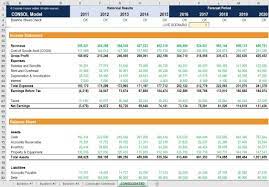Course Overview?
Accounting and Finance are the language of business; understanding and applying this language to your business and to business in general remains the single most valuable competence of management. Prepare yourself by enhancing your personal competence in financial analysis of the past, problem evaluation of today, and budgeting for the future. This program will challenge you to:
- Learn how to use financial statements to evaluate the financial/strategic performance of an organization
- Understand discounted cash flow (DCF) techniques and their application to financial decision-making
- Use ratios to quickly pinpoint areas of concern
- Identify key success factors, weak financial signals, and strong financial signals in your own industry sector
- Learn the metrics used by the world’ leading companies, how to use them and why
- Confidently project your firm’s future performance through real-world budgeting
Course objectives
- Learn how to understand the content of, and relationships between, financial statements (income statement, balance sheet, and statement of cash flows)
- Learn how to use financial statements to evaluate the financial/strategic performance of an organization
- Understand discounted cash flow (DCF) techniques and their application to financial decision-making
- Identify key success factors, weak financial signals, and strong financial signals in your own industry sector
- Understand how EVA® (Economic Value Added), SVA (Shareholder Value Added), RONA (Return On Net Assets), and more
- Define the value creation/destruction process in mergers and acquisitions from the market perspective and signals to management from the market
- Learn how to build a budget that’s works and the variations
- Identify sources of financial and business data that provide insights into business and financial strategies
- Use and build EXCEL spreadsheets for financial analysis: from the basics through complex models

Course contents
Getting started with Financial Analysis (what has happened so far)
- The role and responsibilities of financial management
- The relationship between accounting and finance in analysis
- A review of the basic financial statements and their roles
- Why ROI is still a good place to start
- Identifying key success factors in your industry sector
- Ratios: what they are, which ones to use and why
- Financial review compared to targets and expectations
- Financial performance measurement systems
- Key accounting assumptions
- Case study – Beginning to analyse example –
Moving beyond the basics in financial analysis
- The two kinds of Free cash flow (FCF)
- Altman’s Z-Score and what it really means
- Du Pont analysis and what it tells us
- Scenario analysis: how to calculate it and what it tells us
- Sensitivity analysis: how to calculate it and what it tells us
- Trend analysis: when is a trend a trend? What to do?
- Improving Return on Equity (ROE)
- Case study – Continue the example analysis
Evaluation of the information (where we are today)
- How do I interpret these details?
- What are the important metrics and why?
- Annual reports, footnotes and beyond; what can they signal?
- Short-term success evaluations process and measures
- Industry data, sources and uses
- Benchmarking for evaluation purposes
- EVA, RONA, EBITDA, etc: what do they mean and how to use them?
- Calculating the results of analysis
- Case study – Complete the example analysis
- Strategy – direction and vision
- Implementing strategy – the operational planning process
- Budgets – the financial expression of the operating plan
- The purpose of budgets – control
- The human side of budgeting
- Elements of the budget framework
- Advantages and limitations of budgets
- Reporting – the key to control
Budgeting and the Management Process (the future)
- Case study – Beginning to prepare the budget li> Assumptions li> Master budget li> Proforma financial statements: Income statement, balance sheet, cash flow statement li> Capital expenditure (CapEx) budget li> Sales & marketing budget li> Production budget li> General and Administrative budgets li> Case study: Complete the budget

